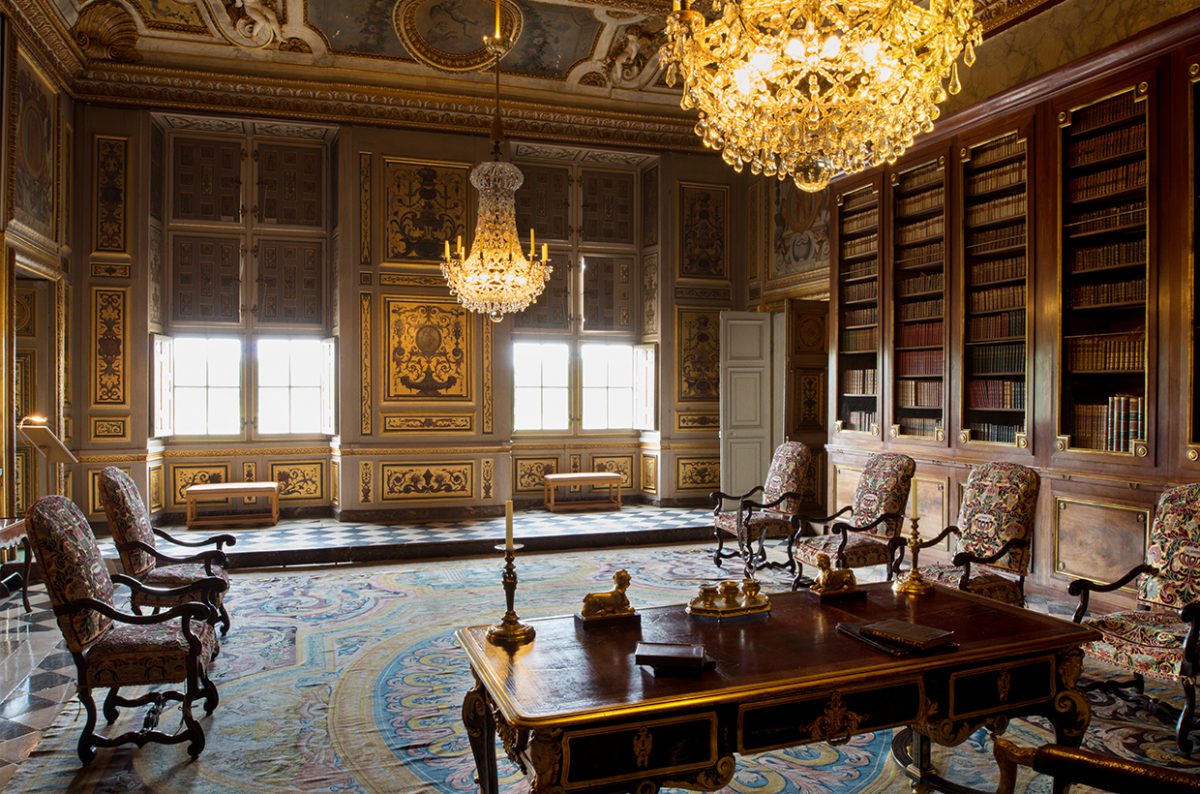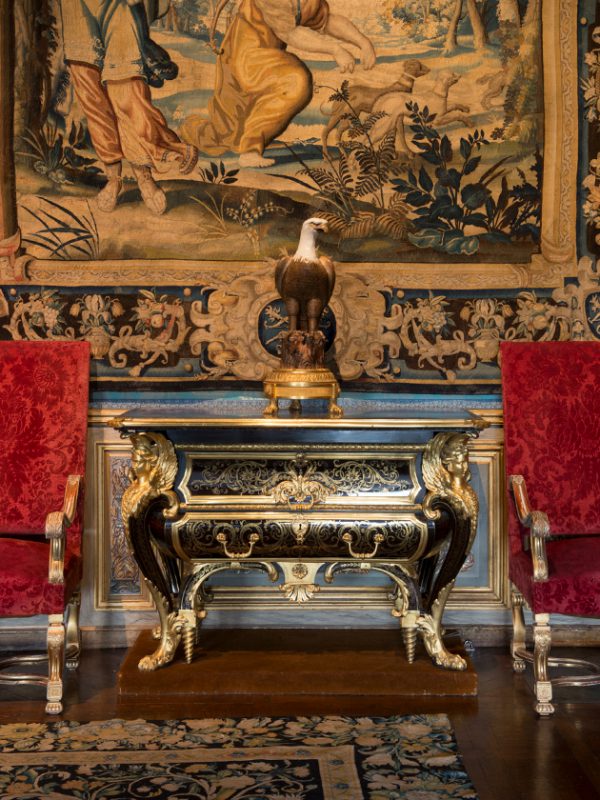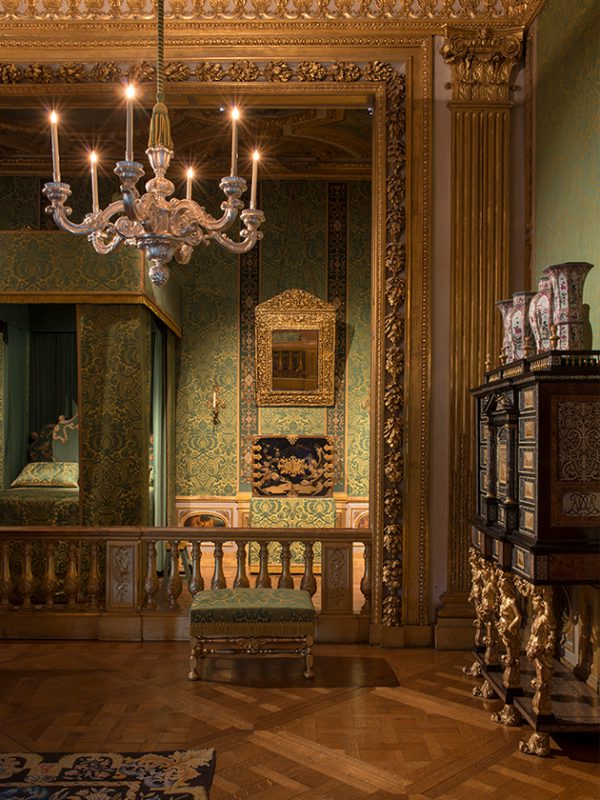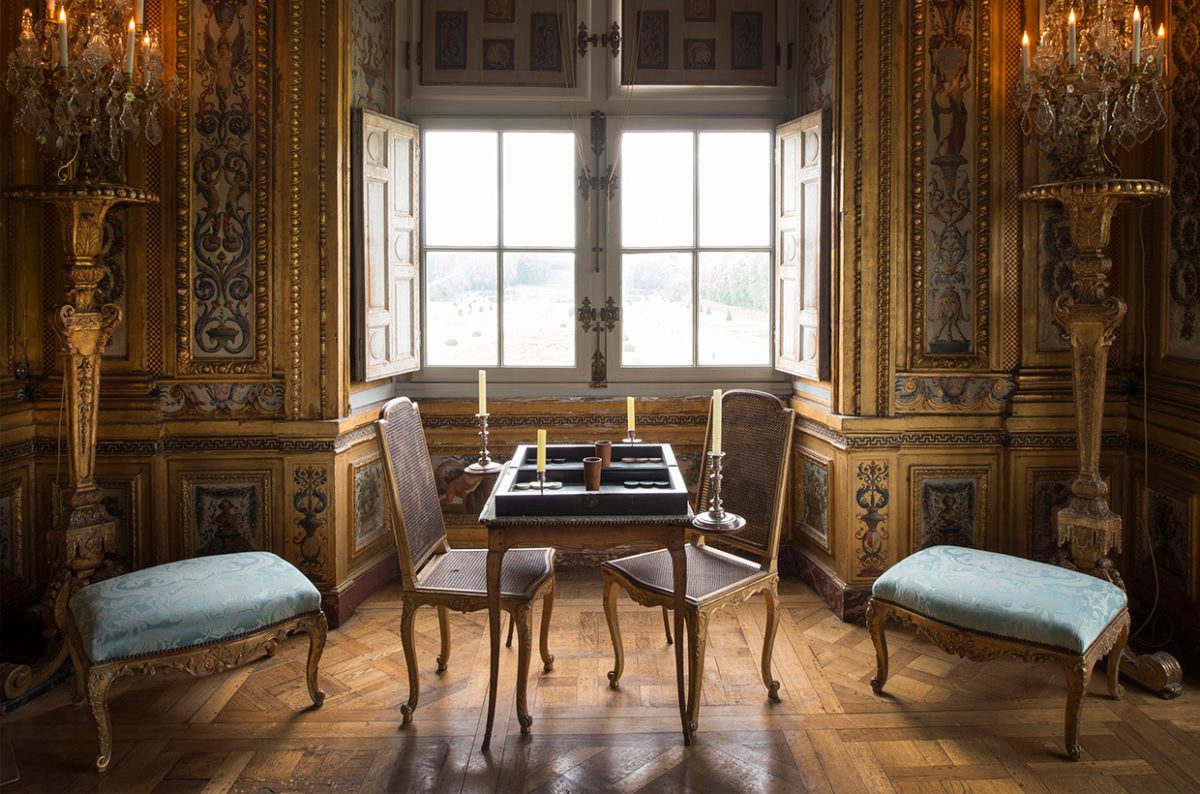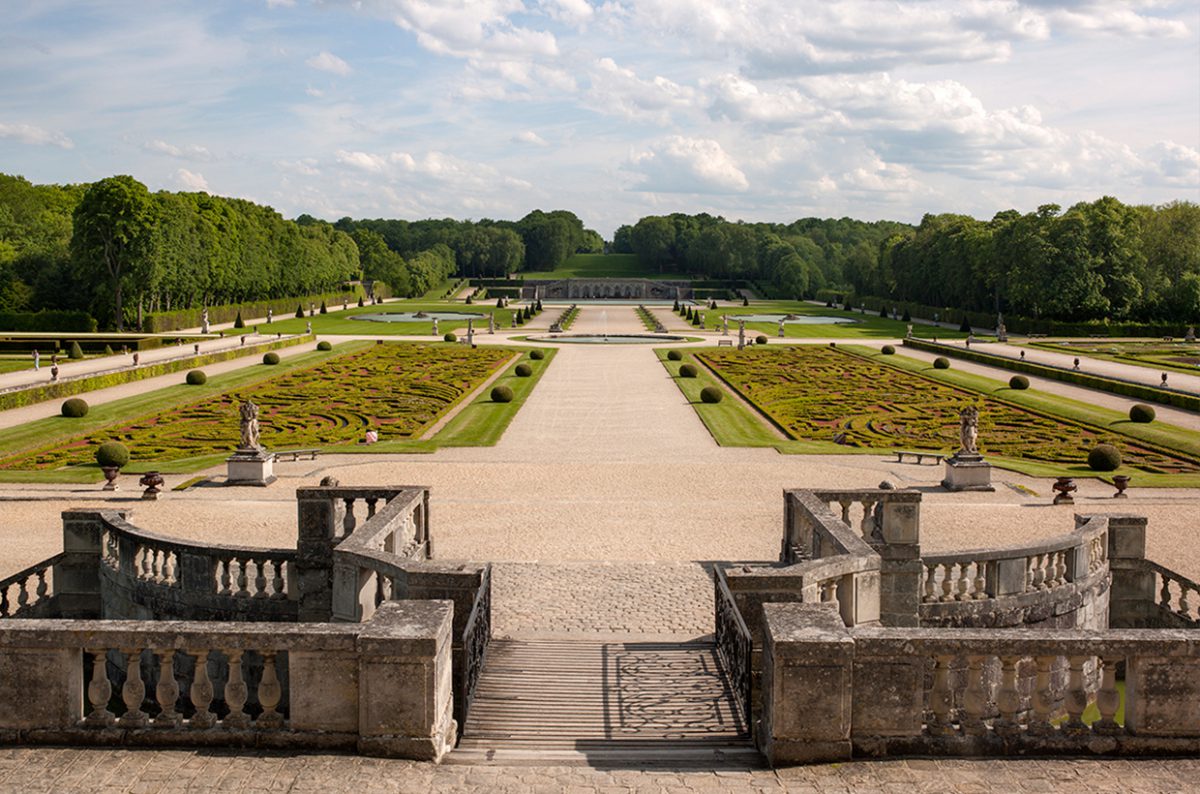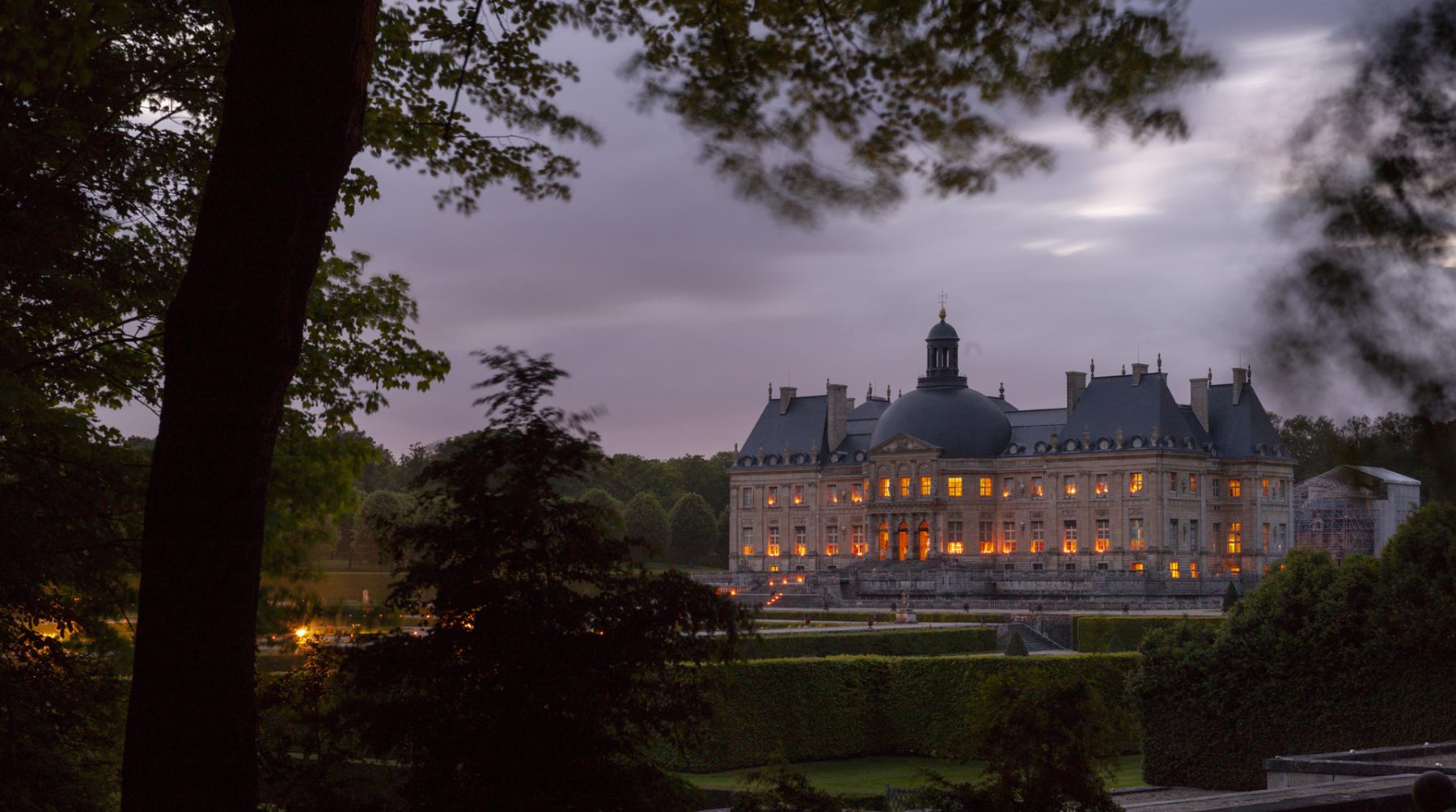Le Château de Vaux-le-Vicomte by Christina Libuda | 23rd November, 2018 | Personalities
Once the inspiration for Versailles, the baroque Château de Vaux-le-Vicomte near Paris is today managed by three brothers from a family that has been taking care of this stunning estate for five generations. They use modern marketing techniques like crowdfunding and hold a lovely Christmas market that attracts half of Paris. Far from being outdated, the château makes visitors feel that history is still being written here. GG stopped by for a visit.
At first glance, the impressive driveway and imposing walls of the Château de Vaux-le-Vicomte make it look like many other grand palaces. Nor does the interior hold very many surprises: baroque murals and furniture and ceilings so high that you could easily fit another building inside it. It is an archetypal château and yet, something about it feels different, and there is a homey, almost cozy atmosphere inside. This is because the Château de Vaux-le-Vicomte is not your average palace-turned-museum but rather the home of the de Vogüé family. Alexandre de Vogüé, the youngest of the three brothers, is someone who loves welcoming guests into his home. This is a good thing. After all, 300,000 visitors pass through the doors of his château outside Paris every year. In fact, the Château de Vaux-le-Vicomte has recently become one of the French capital’s most trendy meeting places. While it is neither bigger nor more beautiful than Versailles, it is a lot more special.
“We offer visitors a totally unique château experience,” says the 52-year-old, who himself lives in the palace along with his wife. “It is so much more than just an exhibition space or a museum. It’s a genuine, lived-in family residence.” Alexandre’s parents Patrice and Cristina de Vogüé. also still reside on the estate. It is only his brothers Ascanio and Jean-Charles who have moved out, so to speak, although they have not gotten very far: One of them lives in Paris, only a 30-minute drive away, and the other one lives in a small village just outside the castle walls. The de Vogüés regularly meet at the château for family get-togethers and to discuss business. All of them have made it their life’s work to preserve the historical buildings and to share the remarkable history of the château with visitors.
In 1656, the then Superintendent of Finances Nicolas Fouquet commissioned the best craftsmen in the country to build the château: the architect Louis Le Vau, the landscape architect André Le Nôtre and the painter Charles Le Brun. Together, they created an architectural masterpiece that far exceeded the beauty of Versailles, which at that time was still a rather modest hunting lodge. To King Louis XIV, this was an intolerable affront. He jailed his ambitious Superintendent of Finances for the rest of the man’s life – ostensibly for embezzling royal funds – and hired the same artists that Fouquet had been using to build an even bigger, more magnificent château: the Palace of Versailles as we know it today. After that, the Château de Vaux-le-Vicomte stood empty for almost 200 years until Alexandre’s great-great-grandfather, the industrialist Alfred Sommier, bought it over 140 years ago. Sommier poured his heart and soul into the château, had it elaborately restored and so helped it regain its former glory.
Those who look around the château today will notice right away that Sommier did not just pass on the château to his heirs, he also passed on his passion for it. Alexandre’s father Patrice de Vogüé decided 50 years ago to open the building to the public in order to ensure its financial survival. At the time, this created new challenges for the family. “We had to hide our toys every day before the tours began at 10 am in order not to detract from the historical image of the château. That was quite awkward, so we ended up moving to the rooms at the back of the château.” However, the large ballrooms remained his playground. If Alexandre was to lead a tour around the château, he could probably tell visitors a personal story about each of the rooms, not just recount the tales told by the murals. The paintings are the picture books of his childhood. As Alexandre got older, he was drawn to the world outside the château walls. He traveled widely and his love for nature and the mountains finally took him to the Alps, where he spent 15 years working as a mountain guide on Mont Blanc. He would hardly mention his home. No one was really interested in who he was or where he had come from, anyway. But this has all changed: Today he wants to share the history of the place he calls home with everybody.
Seven years ago he finally returned to take over the management of the château along with his brothers. “We knew that we had to get this right, otherwise we would crash and burn,” Alexandre says. The pressure was on. The château has 65 employees and constantly incurs refurbishment costs, so there was no trial period. The brothers had to get it right straightaway. “We worked with a management coach who showed us how to run the company together successfully,” Alexandre explains. The three de Vogüé brothers have been managing France’s largest private château since 2012. And they preserve its traditions in very modern ways. No matter whether it is the roof or just a single statue in the garden that needs refurbishing, they raise the money through crowdfunding. There is a clear organizational structure, everyone has their assigned roles. From financial management to event planning to running the restaurant, all responsibilities are shared out among the siblings. And even though they run the company in line with their father’s ideas, the latter cannot help getting involved. He is always ready to give advice – sometimes unsolicited – or to lend a hand. “Even my mom still helps out in the gift shop. I don’t think we’ll ever manage to get her out of there,” Alexandre says, laughing. The château is at the center of the family’s lives. This is also evident during large-scale events, like the Christmas market that opens every year on November 24, when the château is adorned with more than 12,000 decorative elements and there is music and a campfire. This magical event not only attracts Parisians, but also tourists from around the world.
“It’s my favorite event, because it helps you reflect on things,” Alexandre says. The picture he draws of life as the lord of the manor is much more modest than any glittering fantasy people may have. There are no wild parties hosted there, the family breeds neither horses nor hunting dogs and does not care much about elite society commitments. When you listen to Alexandre talking, you believe him. What he particularly loves about his life are the simple pleasures. “I’m at my happiest watching the sun set in the evenings while sipping a glass of wine. To me, this is the most beautiful place in the world, not because it’s a château, but because it is my home.” It is this attitude that is apparent to every single visitor to the château.
